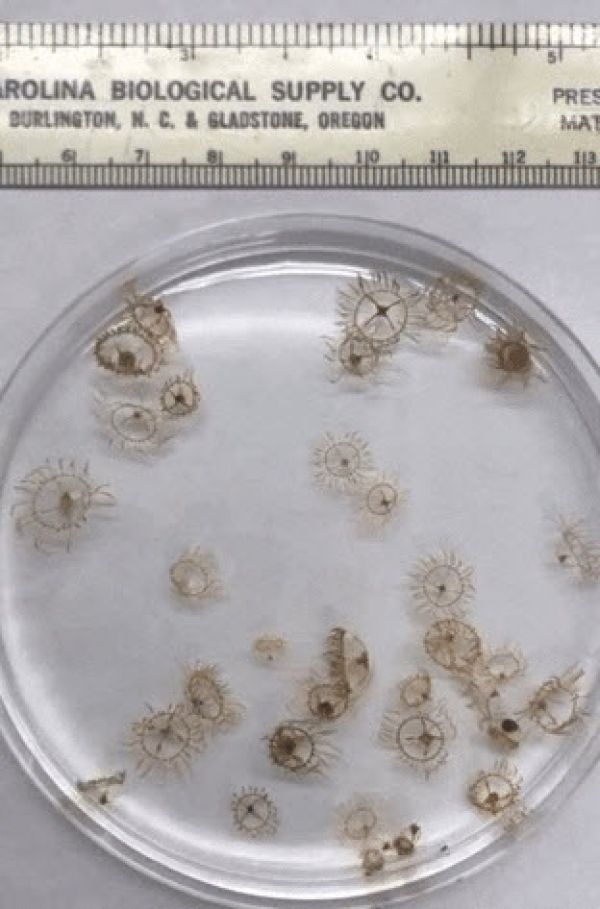“Get it off of me! Get it off of me!” shrieked Mary Carman, a marine ecologist at Woods Hole Oceanographic Institution (WHOI) as she flailed knee deep in the bath-like water of Farm Pond on Martha’s Vineyard. She was observing tunicates (also known as sea squirts) in the quiet coastal pond, garbed in a full wetsuit and snorkeling gear as she hovered through the shallow grassy water. She was well covered except for parts of her face, including her lips which became a landing spot for a clinging, stinging jelly.
“The sting was one of the most painful things I’ve experienced in my life—I liken it to being injected by five hypodermic needles simultaneously,” she said.
Despite the ensuing pain and “two days of nausea,” Carman has been back in Farm Pond on several occasions. But instead of looking at tunicates, she’s been collecting samples of the toxic jellies, scientifically known as Gonionemus sp. In the past several years, she, along with WHOI biologist Annette Govindarajan and their colleagues, has been tracking these clinging jellyfish which, according to a new study, appear to be expanding throughout the Cape and Islands region.
Read more at Woods Hole Oceanographic Institution
Image: Several young clinging jellyfish collected from Martha’s Vineyard swim in a petri dish. CREDIT: Annette Govindarajan, Woods Hole Oceanographic Institution


